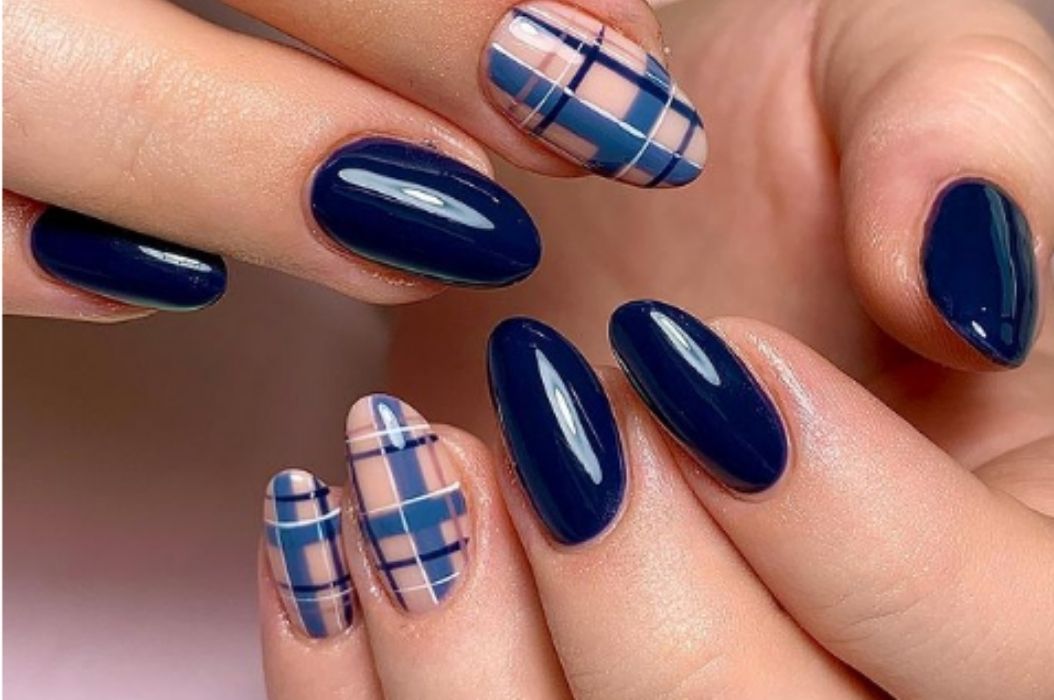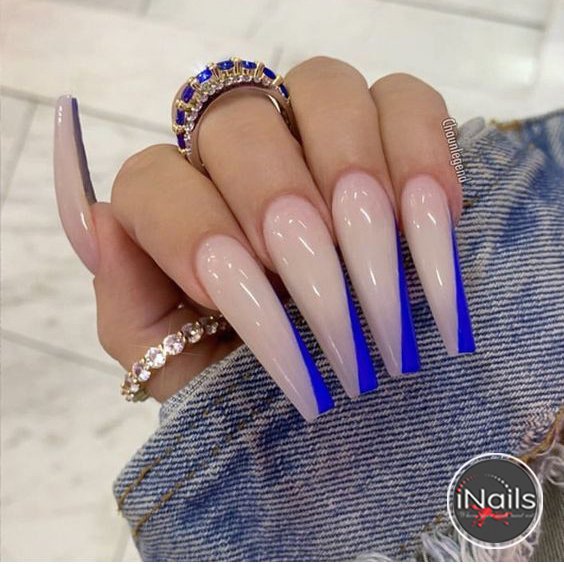What Are Acrylic Nails?
Acrylic nails are a form of artificial nail that are typically used to improve the appearance of a person’s natural nails. Acrylic nails are also known as gel nails. They are produced by combining a powdered polymer with a liquid acrylic solution to produce a thick paste. This paste is then applied to the nails and sculpted into the appropriate form. The final product is acrylic nails.
The mixture immediately becomes hard and creates an enhancement that is hardy and will persist for a long time on the original nail. Acrylic nails can be painted with nail polish, and nail art designs frequently incorporate the usage of acrylic nails. They are a popular option for people who have nails that are fragile or weak, as well as for people who wish to attain a particular aesthetic.
Also See: 50 Best and Attention-Grabbing French Nails Ideas for 2023
What makes Acrylic Nails Distinct from Gel Nails?
Acrylic nails and gel nails are both types of artificial nails that are used to enhance the appearance of real nails; nevertheless, these two types of artificial nails are distinct from one another in a number of important respects.
Acrylic nails are created by combining a powdered polymer with a liquid acrylic solution to produce a thick paste. This paste is then placed to the natural nails and sculpted into the desired form. Acrylic nails can last up to two weeks with proper care. The mixture immediately becomes hard and creates an enhancement that is hardy and will persist for a long time on the original nail. Acrylic nails can be painted with nail polish, and nail art designs frequently incorporate the usage of acrylic nails.
Gel nails, on the other hand, are created using a special type of nail lacquer that hardens when exposed to UV light. Gel nails are also known as acrylic nails. After applying a small coating of gel polish to the nails, the polish is cured using a UV light after it has been applied. In comparison to acrylics, this results in a nail enhancement that is both more durable and more adaptable to wear. Gel nails can be painted with conventional nail polish, however gel nail polishes are typically utilized because they produce a finish that is glossy and appears more natural.
Acrylic nails are generally thought to be more robust and long-lasting than gel nails; yet, acrylic nails are also more prone to cracking and breaking than gel nails. Gel nails, on the other hand, have a more natural appearance and are more flexible than acrylic nails; nevertheless, they do not last as long as acrylic nails and may need to be reapplied every two to three weeks.
Also See: 25 Eye-Catching Black Nails Design Ideas To Try in 2023
How are acrylic nails applied?
“Sculpting” is the term used to describe the method used to apply acrylic nails. The usual procedures are as follows:
- Nails are prepped by washing, buffing, and drying them out before the acrylic is applied.
- Powdered acrylic and liquid acrylic are combined to form a thick, dough-like substance.
- To apply acrylic, a brush is used to paint a tiny coating of the acrylic mixture onto the nail, gradually building up the nail to the desired form and length.
- Manicure entails sculpting and filing the nails into the appropriate form and length.
How About Acrylic Nails? Are They Safe?
If applied and maintained properly, acrylic nails, like other artificial nails, can be risk-free. However, acrylic nails can harm your natural nails and put your health at risk if they are applied incorrectly.
- Acrylic nail care is not without its risks, and some of them are:
- Substances in the acrylic compound trigger allergic responses
- Thinness, cracking, and splitting of natural nails.
- Nail and cuticle infections caused by fungi, bacteria, or both
- Artificial nail-related ingrown toenails
If nails aren’t filed or clipped properly, they might cause harm to the skin around the nails.

It’s crucial that you visit a licensed nail technician who observes all necessary measures of cleanliness and sterilization. The nails should be kept clean and dry, and the habit of biting, picking, or pulling them should be broken. Get medical help right away if you see any signs of infection, such as redness, swelling, or pain.
Before obtaining acrylic nails, you should talk to your doctor if you have any health issues or are expecting a child. It’s also important to note that removing acrylic nails on your own can cause damage to your natural nails if you don’t know what you’re doing.
Also See: 39 Eye-Catching Star Nails Ideas to Try in 2023
How often do I need to fill my acrylic nails?
When you get your acrylic nails filled, you should expect to wait about two to three weeks between appointments. The acrylic will start to peel away from the nail bed as your natural nails develop, allowing some of the nail bed to show through. If left untreated, this can weaken your natural nails and make them look uneven and unattractive.
By maintaining a regular schedule of fills, you may protect your natural nails and keep your nails looking neat and well-kept at all times. Keep in mind that the time between fills may vary from person to person based on their nail growth and other factors.
What is the average lifespan of acrylic nails?
Depending on the individual’s nail development, habits, and the quality of the treatment, acrylic nails can last for a few weeks or more. Acrylic nails typically need to be filled or changed after two to four weeks.

How carefully you maintain your acrylic nails is another factor in how long they will last. If you want your acrylic nails to last as long as possible, you should keep them clean and dry and refrain from behaviours that could harm the nails, such as biting or picking at the nails.
It is recommended to have your acrylic nails filled every two to three weeks to keep them looking natural and preserve their beauty. It’s important to remember that acrylic nails may be removed whenever you choose, but they should be removed by a professional to avoid damaging your real nails.
Also See: Blue Nails Ideas: 64 Best Eye-Catching Designs to Try in 2023
Can acrylic nails damage natural nails?
If acrylic nails are not done and maintained correctly, they might cause damage to your natural nails. As the natural nails are filed down during the application of acrylic nails, harm can occur if done too roughly. In addition, your natural nails can lift, crack, or break if you don’t take good care of your acrylic nails and get them filled on time.
Water and other harsh chemicals can also be damaging to the nails if they are subjected to them repeatedly. It is crucial to take care of your natural nails by avoiding excessive water exposure, harsh chemicals, and obtaining frequent fills to limit the chance of damage.
When it comes to removing acrylics, what works the best?
Soaking off is the most effective method for removing acrylic nails. To do this, immerse your fingernails or toes in acetone-based nail paint remover for 15 to 30 minutes. Acetone softens the acrylic, making it simple to file or push off the nails without damaging the natural nail bed. In general, use these steps to take off artificial nails:
- To prepare the acrylic nails for acetone removal, gently file the surface of the nails to break the seal of the top coat.
- Place an acetone-soaked cotton ball or pad on top of each nail.
- Use foil or a nail clip to keep the cotton pad in place.
- Wait 15-30 minutes, or until the acrylic is soft enough to be scraped out with a cuticle pusher, and then soak the nails.
- Be careful not to damage your natural nails as you gently push off the acrylic with a cuticle pusher or an orange stick.
- File or buff away any residual bits of acrylic trash.
- Apply some moisturiser to your cuticles and nails to keep them supple and healthy.
The nails and skin may suffer damage and it may take a long time, therefore it’s best to have a professional do it or do it yourself with caution.




